No one likes tiny black bugs in their home, but before you grab a broom or a bottle of bug spray, it pays to know what you’re fighting. Different species have different eradication methods. Let’s talk about small, black pests and what they could be.
There are many tiny black bugs that could invade your home and yard. These include gnats, ticks, ants, bed bugs, carpet beetles, fleas, and midges. Here’s what you need to know to identify them – and get rid of them.
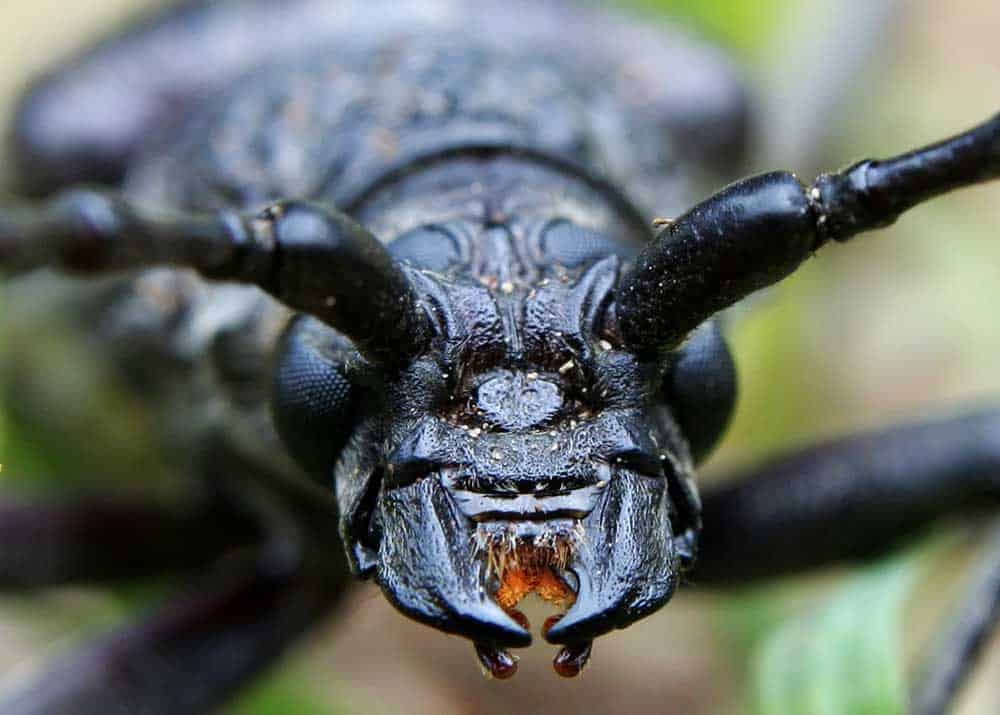
Here is our guide to tiny black bugs and pests. Each bug, insect, and spider on this list may include many hundreds – even thousands of species.
The photos and descriptions will help you identify the type of invader you have at your home.
And while all these animals are insects, not all of them are actually “bugs”. Here are the differences between bugs and insects.
Table of Contents
Gnats
- Scientific name: Mycetophilidae, Anisopodidae, and Sciaridae
- Common name: Gnats
- Size: Less than 6 millimeters
- Appearance: Dark, winged bugs that look like small flies
- Habitat: Dark and occasionally damp places
- Range: Worldwide
- Diet: Organic matter, including food, compost, garbage, and occasionally blood
- Life cycle: 18 – 30 days
- Risk factor: Mild
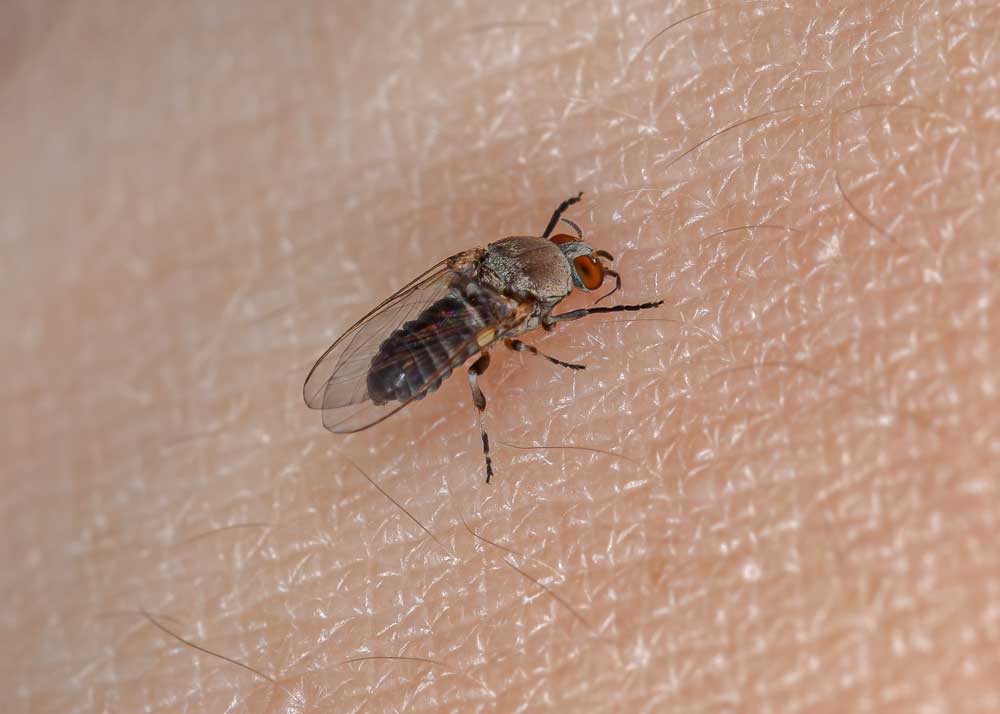
Gnats are a common household pest. They can be particularly troublesome when they come in a swarm, which is also known as a cloud.
There are many types of gnats with various diets and habitats. For example, non-biting gnats are usually found near water, and they don’t feed on blood like biting gnats do.
Gnats that like to feed on fruit are sometimes known as “fruit flies.”
How to Get Rid of Gnats
You can employ several methods to kill gnats, including:
- Sticky traps
- Bug spray
- Bug “zappers”
You can also try natural remedies like apple cider vinegar mixed with water, sugar, and dish soap. The sweet smell will lure in the gnats, and the gluey nature of the substance will hold them and drown them.
Ants
- Scientific name: Formicidae
- Common name: Ants
- Size: Varied
- Appearance: Varied
- Habitat: Forests, swamps, deserts, and indoor buildings
- Range: Worldwide
- Diet: Everything
- Life cycle: Varied
- Risk factor: Mild to moderate
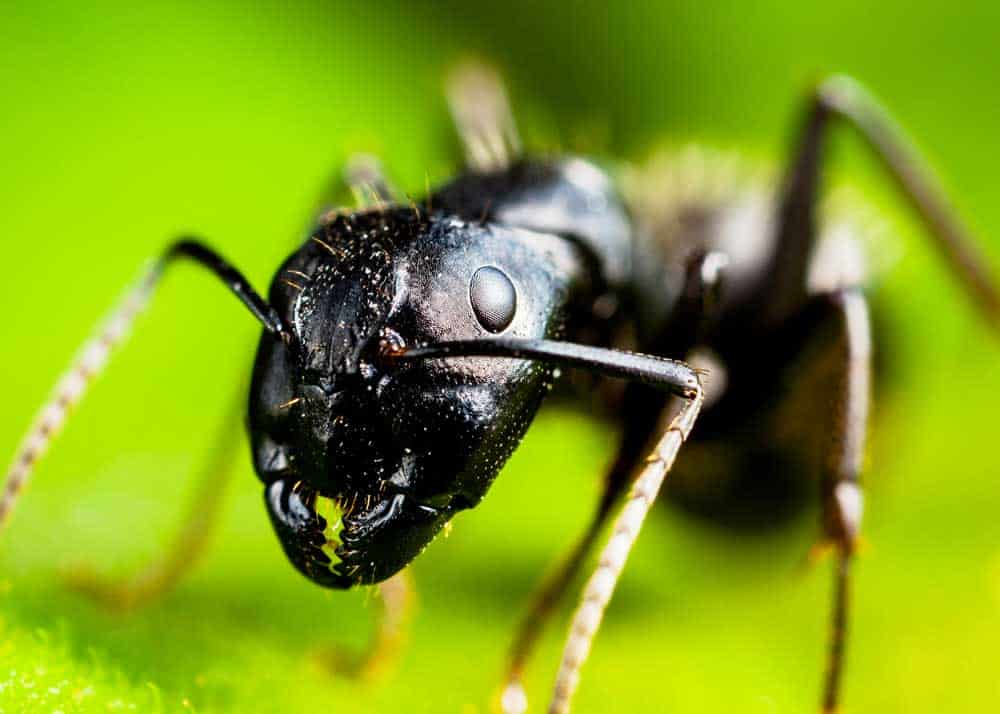
There are more than 12,000 types of ants, so we can’t list them all here.
However, here are a few common varieties:
- Fire ants
- Carpenter ants
- Pharaoh ants
- Acrobat ants
- Odorous ants
- Sugar ants
Ants are known for being prolific scavengers that will eat anything.
Whether it’s leftovers from a suburban fridge or partially-eaten hyenas in the savanna, they’ll take whatever feeding opportunities they can get.
Learn more about flying ants.
How to Get Rid of Ants
To kill ants, you’ll probably need a bug spray. This is because ants rarely come in small numbers, so a few strips of sticky tape aren’t going to cut it. You’ll need to spray, mist, or even hose it.
Other, more natural methods of extermination range from essential oils to diatomaceous earth. They’re often used as deterrents to stop the ants from crossing the borders of your home or garden in the first place.
To this effect, it can also help to seal up cracks and crevices around your home.
Carpenter ants are large and quite destructive. Here’s how to get rid of carpenter ants.
Here are 28 animals that eat ants.
Fleas
- Scientific name: Siphonaptera
- Common name: Flea
- Size: 1.5 – 3.3 millimeters
- Appearance: Small, dark bodies without wings but with strong claws and mouthparts
- Habitat: Shady, moist, and humid places
- Range: Worldwide
- Diet: Blood
- Life cycle: Several months
- Risk factor: Mild to severe
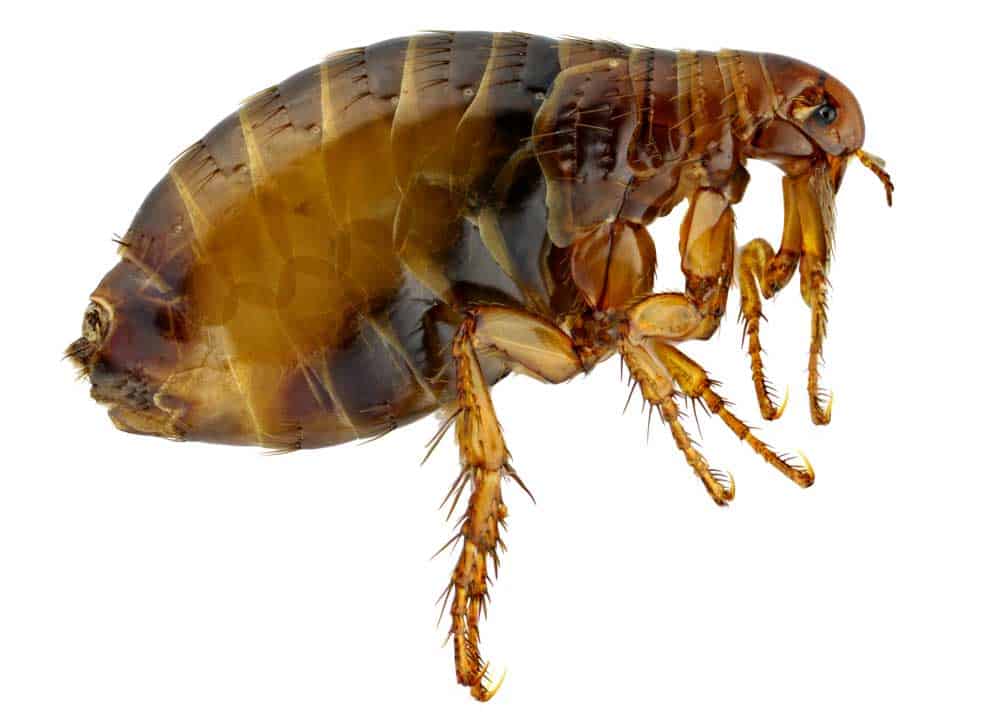
Fleas are most commonly associated with cats and dogs since household pets are prime carriers. However, they can also infest homes without any animals. They feed on blood, and they aren’t picky about where they get it.
Another thing to know about fleas is that they can travel great distances to cause an infestation. They’re flightless insects, but they make up for their lack of wings with their incredible jumping power.
They can leap up to 50 times their height! They also have strong claws and mouthparts that can be hard to dislodge once they’re sunk into skin or fur.
How to Get Rid of Fleas
Fleas aren’t hard to kill. The tricky part is killing all the eggs and adult bugs to ensure they don’t repopulate in the blink of an eye.
Since female fleas lay up to 40 eggs per day, and eggs only take around two weeks to hatch, staying on top of them can be a constant battle.
To kill fleas, you can use the usual extermination methods, including bug sprays, essential oils, and special washes and shampoos. Just make sure to re-do everything on a regular basis to keep the eggs from hatching and starting the cycle all over again.
Here’s how to get rid of sand fleas.
It’s good to know the difference between chiggers and jiggers.
Midges
- Scientific name: Nematoceran Diptera
- Common name: Midges
- Size: 1 – 5 millimeters
- Appearance: Small, dark, and shiny bodies with wings
- Habitat: Everywhere except deserts and icy regions
- Range: Worldwide
- Diet: Plant and animal material
- Life cycle: Around three weeks
- Risk factor: Mild
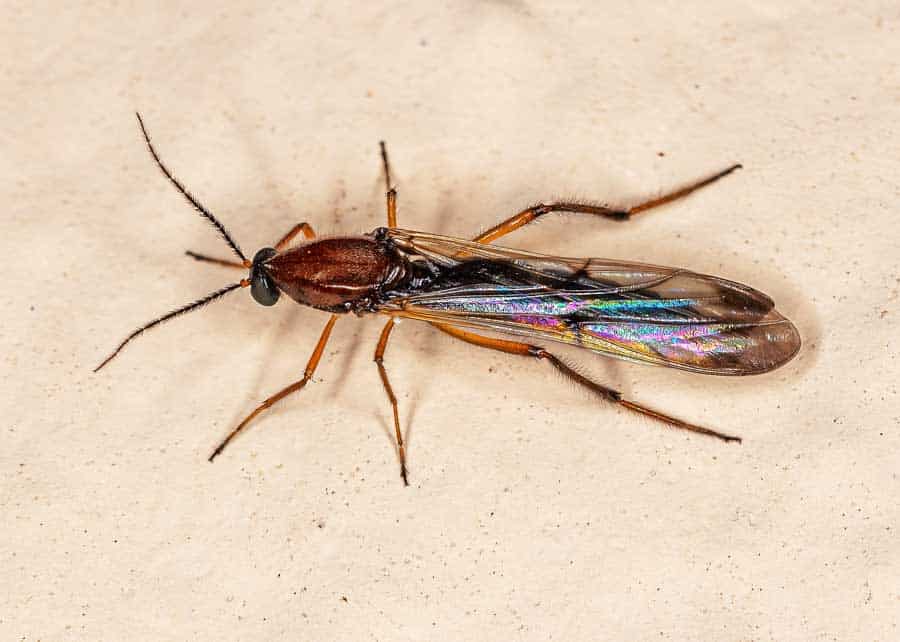
Midges are small flies that resemble mosquitoes. With the exception of the biting midge or no-see-um, they don’t bite, and they’re more of a nuisance than a serious health risk. They live off things like sap, pollen, bug larvae, and animal droppings.
The biting midge is the midge that you’ll want to beware of. These little bloodsuckers can cause itchy, painful legions after they’ve fed on you.
They’re also so small that they can be hard to detect until after you’ve discovered new bites on your skin, which is why they’re nicknamed “no-see-ums.”
How to Get Rid of Midges
An insecticide is useful against midges since it can kill them on contact and stop them from biting you. It’s available in both spray bottles and aerosol cans.
Another way to kill midges is with a CO2 lure trap. These are basically bug zappers that emit carbon dioxide rather than UV light.
The midges will be attracted to the smell, but when they get close enough, the trap will suck them in with vacuum power and hold them until they dehydrate and die.
Mosquitoes
- Scientific name: Culicidae
- Common name: Mosquitoes
- Size: 3 – 10 millimeters
- Appearance: Winged, segmented bodies with extra-long mouthparts
- Habitat: Forests, marshes, and grasslands, especially those around water
- Range: Everywhere except Antarctica
- Diet: Blood
- Life cycle: 8 – 21 days
- Risk factor: Moderate to severe
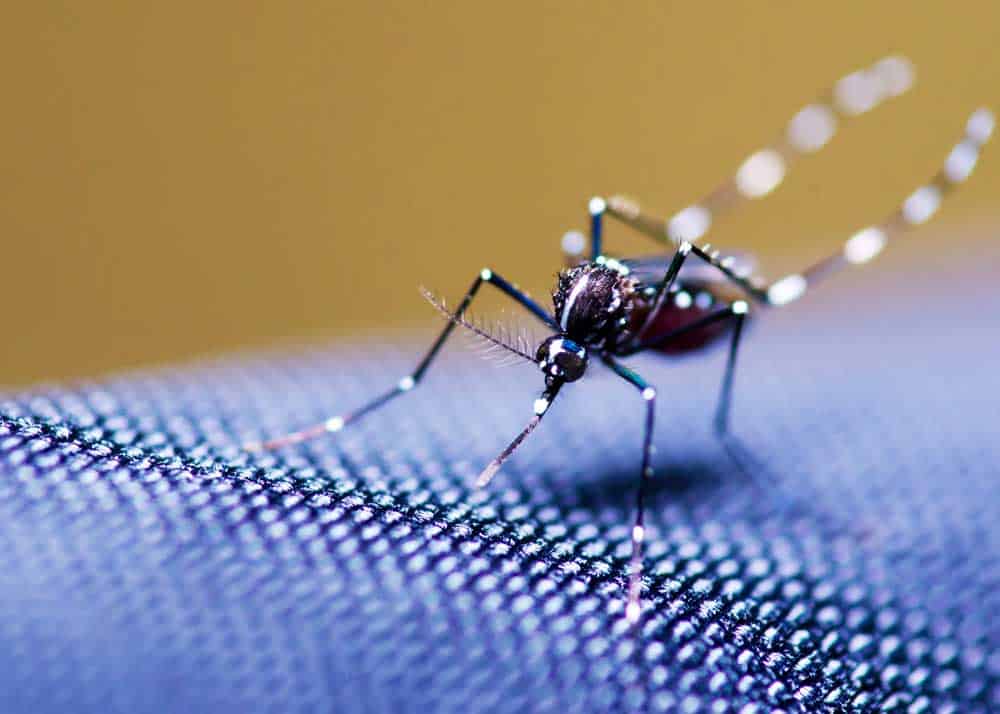
Mosquitoes can be a serious problem for homeowners. Not only do they cause itchy bites, but they can transmit life-threatening illnesses such as malaria, dengue fever, and the West Nile virus.
Mosquitos can even bite through some clothing, depending on the fabric.
The ideal habitat for mosquitoes is a moist and humid one. They thrive in temperatures ranging from 60°F – 80°F, and though they can survive in hotter or colder climates, they’ll be less active then.
They also like water, especially standing water, so they often breed around lawns and gardens.
How to Get Rid of Mosquitoes
The best way to get rid of mosquitoes is through prevention rather than extermination.
Eliminate sources of standing water in your yard, and invest in things like screen doors and mosquito nets to stop them from gaining access into your home.
If you have an active mosquito problem, you’ll also need to kill them, so consider the following methods:
- Chemical bug sprays and repellents
- Citronella torches
- Bug zappers
- Essential oils
You can also encourage natural mosquito predators.
Ticks
- Scientific name: Ixodida and Argasidae
- Common name: Ticks
- Size: 3 – 5 millimeters
- Appearance: Small, black-red bodies or large, swollen, and white-gray bodies
- Habitat: Warm and humid climates
- Range: Worldwide
- Diet: Blood
- Life cycle: 2 – 3 years
- Risk factor: Moderate to severe
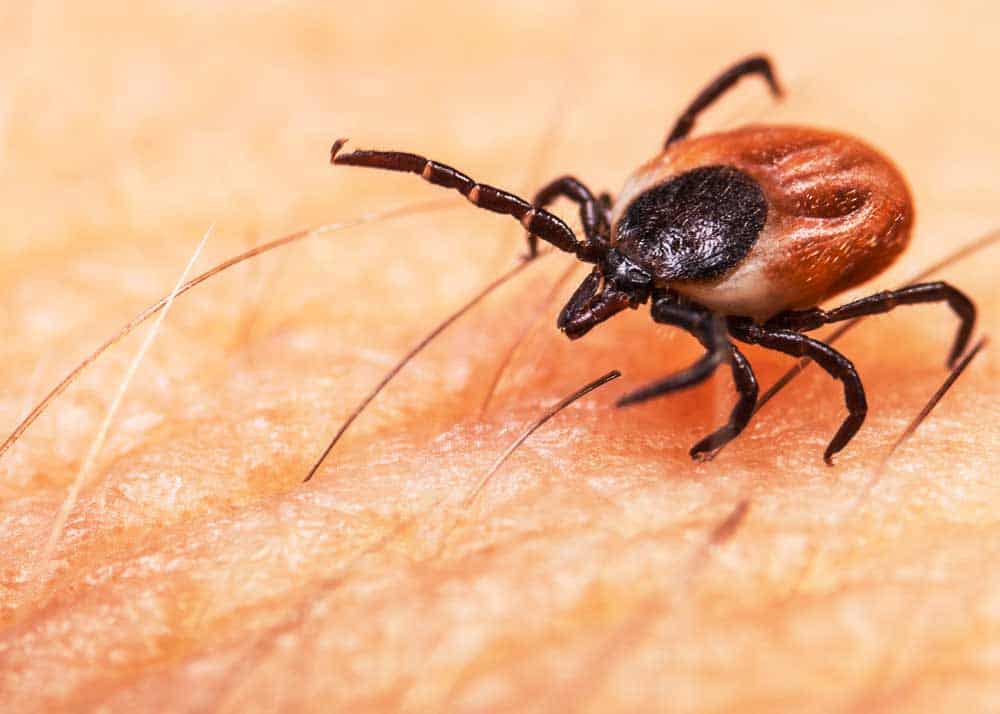
Ticks are another pest that you won’t want to ignore. Like mosquitoes, they can cause all kinds of health problems for both people and pets, including incurable Lyme disease.
Ticks also have relatively long lives for insects, and they can feed on multiple hosts before dying, so they aren’t a problem that will go away on their own. You’ll need to take measures to end them.
If you want to take matters into your own hands, here are 14 ways to kill a tick.
How to Get Rid of Ticks
Chemical repellents for ticks usually have permethrin, an ingredient that’s used in a lot of lice and mite treatments.
You can also make natural remedies using eucalyptus, cedar, or neem oil.
To get rid of ticks, you might encourage animals that eat ticks to live around your property.
Another option is diatomaceous earth, an all-natural powder that can be spread around the boundaries of your property. Though harmless to humans, it has jagged edges for insects, so ticks will wound and kill themselves just by crawling over it.
Here are the best tick repellents for your yard (natural and chemical).
Carpet Beetles
- Scientific name: Attagenus
- Common name: Carpet beetles
- Size: 3 – 5 millimeters
- Appearance: Hard, dark bodies with short and stubby legs
- Habitat: Indoors, usually around fibers or fabrics
- Range: Asia, Europe, and the Americas
- Diet: Natural fibers
- Life cycle: 2 – 6 weeks
- Risk factor: Mild
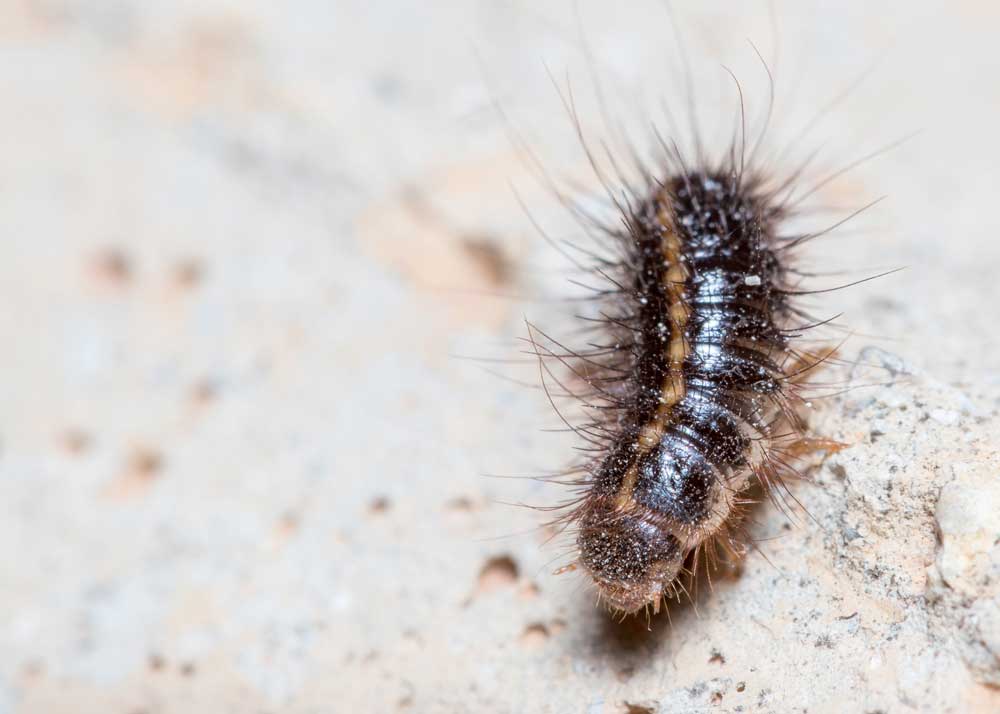
Carpet beetles are harmless to humans, but they can do real damage to clothing, bedding, carpets, upholstery, and anything else made out of fabric. This is what they eat.
There are many species of carpet beetle, and they can range in size and color, but they’re most often small, dark, and slow. You might find them wandering up your walls or crawling around your floors or furniture.
Carpet beetles don’t bite, so it’s just your belongings that you’ll need to worry about.
How to Get Rid of Carpet Beetles
Since beetles have hard exoskeletons, you’ll need something stronger than just an ant-and-flea bug spray. Look for something that’s marked specifically for beetle extermination.
Spiders
- Scientific name: Arachnida
- Common name: Spiders
- Size: Varied
- Appearance: Oval, large-abdomen bodies with eight legs and compound eyes
- Habitat: Small, dark, and usually dry places
- Range: Worldwide
- Diet: Insects and other small creatures
- Life cycle: 1 – 20 years
- Risk factor: Mild to severe
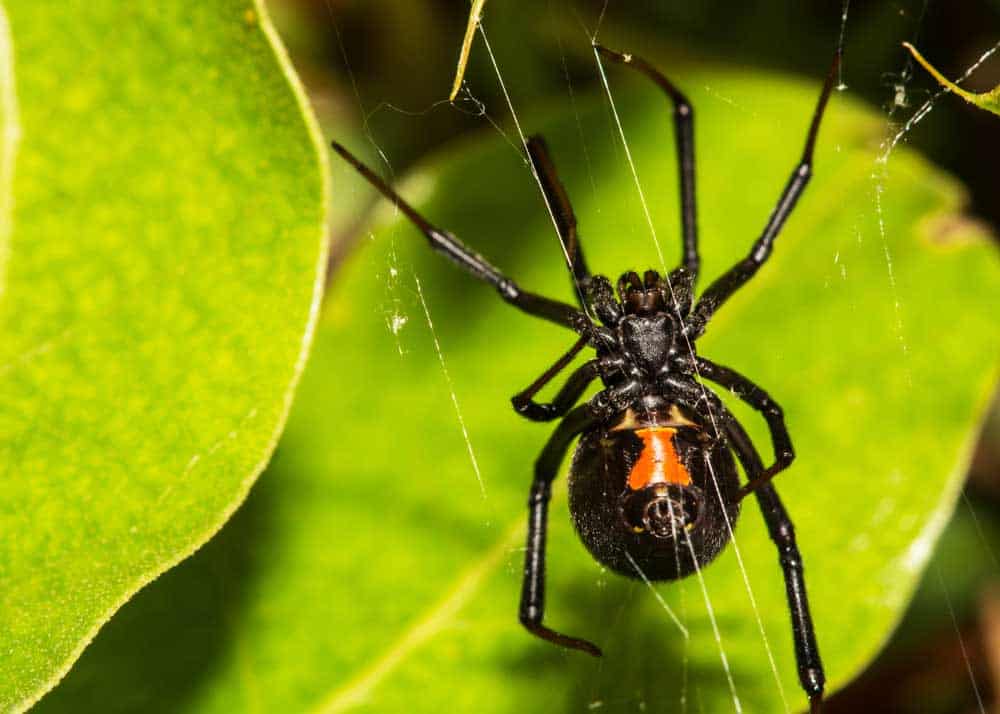
With more than 45,000 sub-species, the spider family is absolutely enormous. However, you aren’t reading this article because of banana spiders or yellow orb-weavers.
Which spiders are small and black?
The answer depends on where you live. Blackhouse spiders, for example, are common in Australia.
Purseweb spiders are native to Europe. The gray wall jumping spider can be found in Africa and the Americas.
At first glance, the tiny brown recluse spider might look black.
Here are 9 common house spiders.
How to Get Rid of Spiders
There are both home and chemical remedies for spiders. Chemical insecticides can be purchased from the store; DIY solutions can be made by mixing a strongly scented oil like peppermint with equal parts water and dish soap.
The resulting solution can be sprayed across doors, windows, walls, and foundations as a deterrent. You might also try cinnamon, ammonia, citrus, or citronella.
Here are 15 easy methods to get rid of spiders.
Bed Bugs
- Scientific name:Cimex
- Common name: Bed bugs
- Size: 1 – 7 millimeters
- Appearance: Squat, oval-to-round bodies with long legs and antenna
- Habitat: Dark, hidden places inside dwellings
- Range: Worldwide
- Diet: Blood
- Life cycle: 2 – 4 months
- Risk factor: Moderate
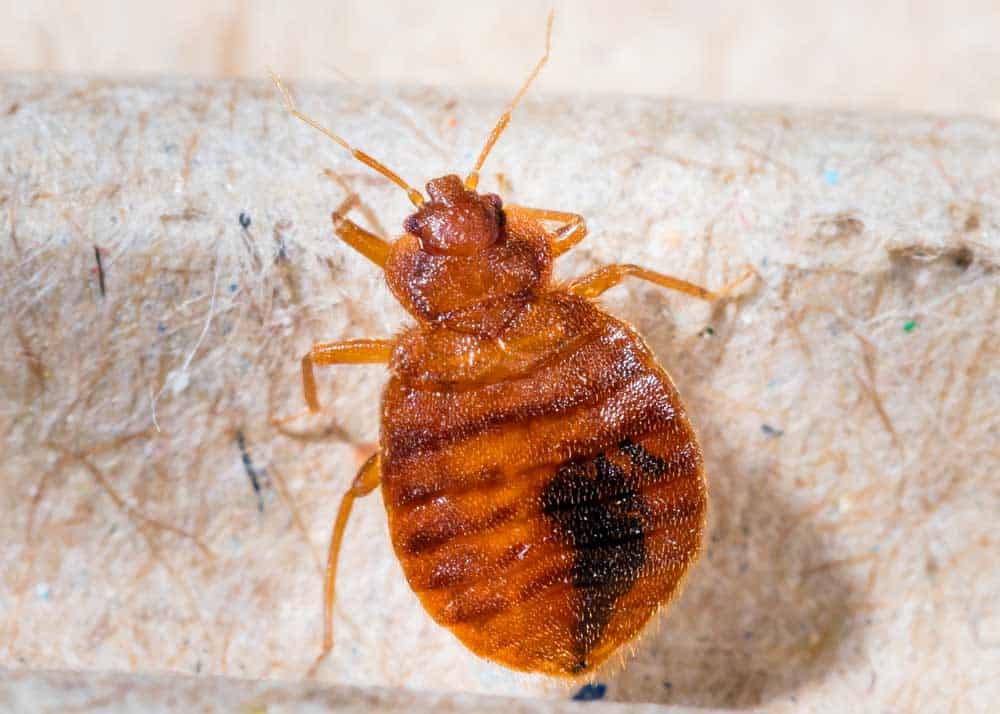
Bed bugs can be an awful and persistent infestation. This is largely due to the fact that they live in small, dark, and hidden places inside walls, mattresses, baseboards, electric outlets, and more.
You might kill all of the visible bed bugs and miss hundreds more in a crack somewhere.
Bed bugs aren’t considered dangerous, but they do feed on blood, and their bites can be painful.
How to Get Rid of Bed Bugs
Getting rid of bed bugs will require time and effort. In addition to vacuuming frequently, you’ll want to seal off infected items, and washing your clothes and bedding on high heat.
You’ll also want to apply either a chemical or natural insecticide. You can do this with both sprays and foggers. But you can skip the Lysol. There are better methods.
Here’s how to find bed bugs during the day.
Tiny Black Bugs FAQ
How can I identify tiny black bugs in my home?
It can be hard to distinguish between insects that are no larger than pinpricks, so here’s a tip: Focus on where you found them and what they look like.
- Carpet beetles might like your closet.
- Midges or mosquitoes might congregate around standing water.
- Flies might love your garbage.
What causes tiny black bugs in the home?
There are many reasons for pest problems.
Cleanliness is a common one, but there are also blood-sucking insects that will hitch a ride on any available host into any available home. It isn’t necessarily a commentary on you if you have bugs.
What are the most dangerous tiny black bugs?
Some black bugs are harmless, including gnats, non-biting midges, and carpet beetles.
Other black bugs like flies, ants, mosquitoes, and ticks can cause real health problems for you and yours.
It all depends on the species that you’re dealing with and the seriousness of the infestation that you have.
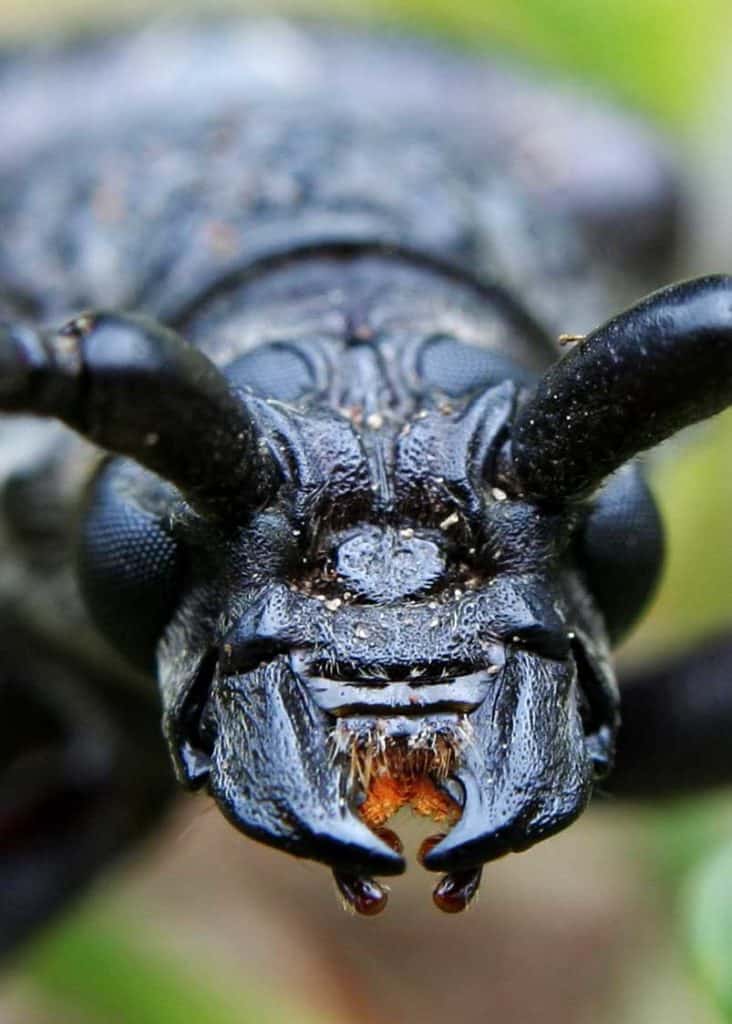
Is that a 6-legged spider? Guide to Spider Beetles.
Getting Rid of Tiny Black Bugs
If you’ve discovered black bugs in your home, you might be tempted to torch the whole place and call it a day. Resist this urge! With a little knowledge and some elbow grease, you can successfully eliminate your pest problem. Good luck!
- About the Author
- Latest Posts
Bryan Haines is a co-founder and writer at The Buginator. And is working to make it the best resource for taking back the outdoors from biting, stinging pests.
He also blogs about travel at Storyteller.Travel and photography at Storyteller Tech. Bryan is a partner at Storyteller Media, a publishing company he runs with his wife, Dena.
